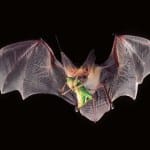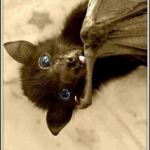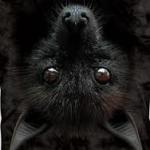 Dangerous or Beneficial, Scary or Cute??
Dangerous or Beneficial, Scary or Cute??
Bats may be the most misunderstood, under-loved and under-appreciated animals in the United States. Many misconceptions about bats persist: they all have rabies, they get tangled in your hair, or they’ll suck your blood…. Less than 1% of bats carry the rabies virus (Univ. of Florida) and fewer than 40 people in the past 40 years are known to have contracted rabies from bats. Their benefit, as the main predator of night-flying insects, makes them a desirable and welcome addition to your property. Additionally, their guano (droppings) is among nature’s best organic fertilizer; high in nitrogen and phosphorus.

In New Jersey, the big brown bat and the little brown bat are the two primary species of the more than 45 species found in the United States. Almost all feed exclusively on insects, making them extremely beneficial. One bat can eat up to 1200 insect in a single hour! A world without bats would be overrun with pests.
While it can be a frightening experience if a bat unintentionally enters your living space, they are not aggressive animals. On the contrary, in their frantic attempt to escape, they are likely confused and more afraid of you than you are of them. To help them exit, remain calm, open windows and doors, dim the lights and stand quietly in a corner so you know it has left.

Our Bat Populations Are At Risk and In Danger
- Use of pesticides and herbicides are reducing the prey available to foraging bats.
- Natural habitats are dwindling through development.
- A fungus called White Nose Syndrome is killing hibernating bats at an alarming rate: nearly 6 million since 2007. Several species are extremely endangered and close to extinction (CBS News). With this reduction, farmers are spending millions in additional pesticide applications to control crop pests aided in the past by hungry bats.

How You Can Protect and Attract Bats to Your Property
- Replace pesticides with eco-friendly alternatives.
- Provide and protect bat habitats. The little brown bat and big brown bat are two species that frequently use bat houses. Others roost in barns, caves and hollow trees. A well designed and properly located bat house may attract these and others that live in your area or that may be passing through.
- Manage land development in a way that encourages wildlife to thrive. Leave some naturalized areas and an occasional old dead tree where they can hide behind loose bark.
For Information on New Jersey’s Bat Population
GET THE LATEST NEWS
Subscribe to the Organic Plant Care Newsletter and get timely and helpful tips and updates monthly.
There's no spam - we promise!





